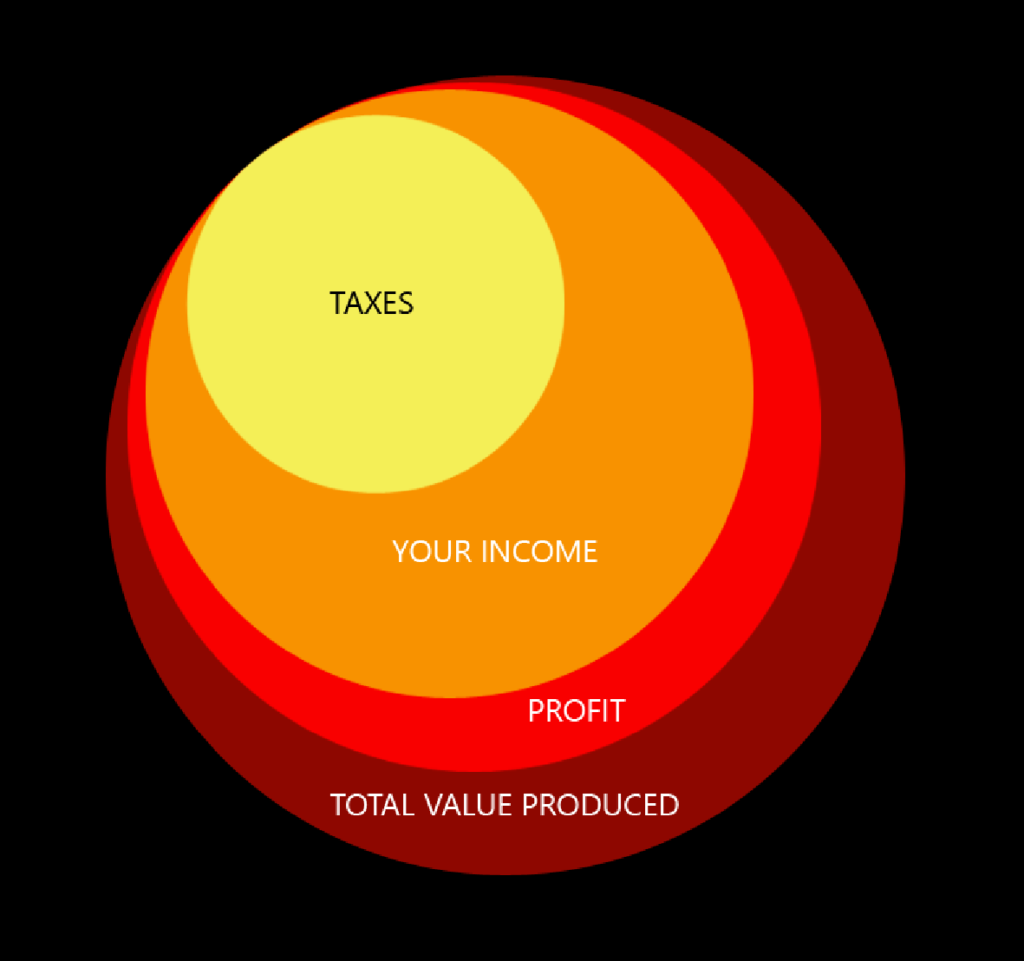
The labor theory of value is at the cornerstone of every economic scheme hatched by all the different flavors of Marxists. Due to some of its more economically illiterate proponents putting forward a number of silly claims, it has also become a point of ridicule and caricature. However, in an honest discussion, are we on the classical liberal side of the economic spectrum, accurately representing the theory? This is a common complaint of the intelligible Marxist, that the theory is being mispresented. Here I will argue, the Marxist doest have a valid point, though it hardly changes the final outcome.
First, let us get the usual caricature of the Labor Theory of value out of the way. No Marx does not claim that simply working hard, or working for a certain amount of time automatically produces value. The following cartoon may be funny, but it misrepresents the theory.
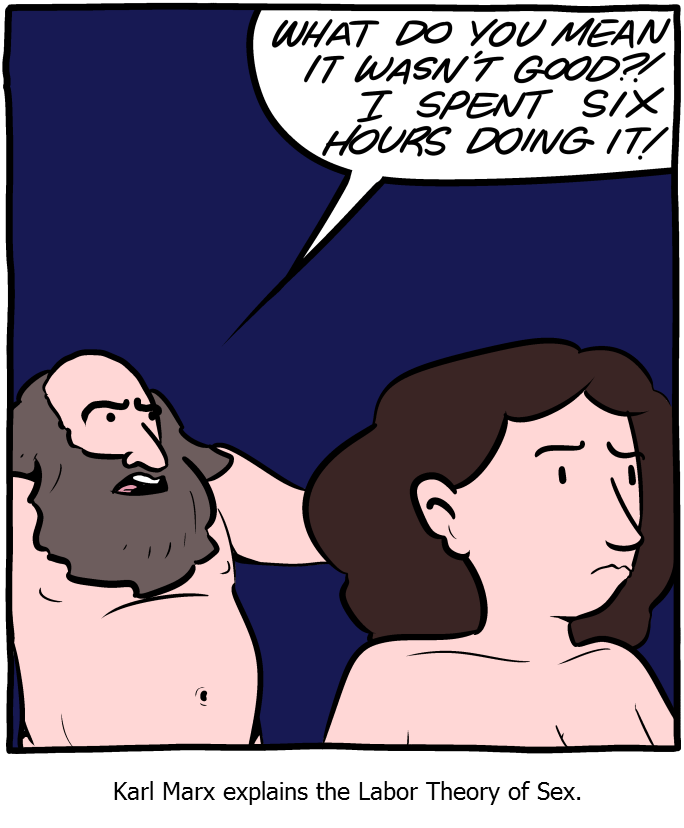
The usual conversation between a classical liberal and a Marxist goes something like the below. The classical liberal illustrates that a product’s value is determined by the people who want to buy the product, not the labor that went into it. The Marxist agrees but claims that the theory is misrepresented. Is it, and if yes, why?

Yes, it is still misrepresented here. You see Marx does admit that whether something is actually valuable or not, and how valuable it is, is determined by the people. What his labor theory of value really states is that if an object is of value, that value was created by the labor that went into it. So using the above example, if people determine that a baked pie is indeed of value to them, the source of that value is the physical labor that went into baking that pie.
This small change in phrasing makes a very big difference in how the labor theory of value ought to be represented. However, now even with its proper understanding, it is still very problematic. The problem is illustrated very elegantly in the below cartoon.
You see Marx’s labor theory of value only credits the value of an object to physical labor and discounts all other types of labor, such as mental work, work of raising funding, the work performed by capital, etc. Essentially everything, except for physical labor is discounted. The below cartoon exemplifies this problem perfectly. The old man in the cartoon puts in the metal labor to create a vision, designs the cups, analyzes the market, raises funds, purchases capital that will do much of the physical work, and in the end, all of that work is discounted in favor of some remaining physical task that will be performed by a human.
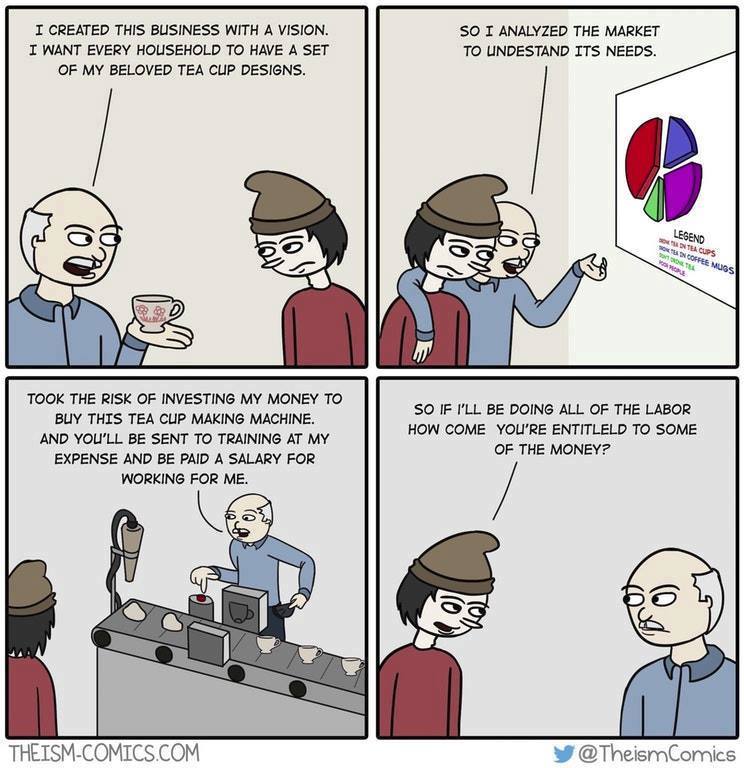
Some Marxists of course accept engineers, programmers, designers, architects, as well as other forms of mental work under their umbrella of labor. They understand that a highly paid engineer that designs a computer chip contributes a much greater value than the manual laborer that physically puts that chip inside a plastic container. The remaining problem that they have is with the financiers.
After all the physical and mental laborers are paid, and other costs are subtracted, what is left is what they call surplus value, or what is normally called profit. This surplus value is distributed to the financiers, and this is what Marxists find objectionable.
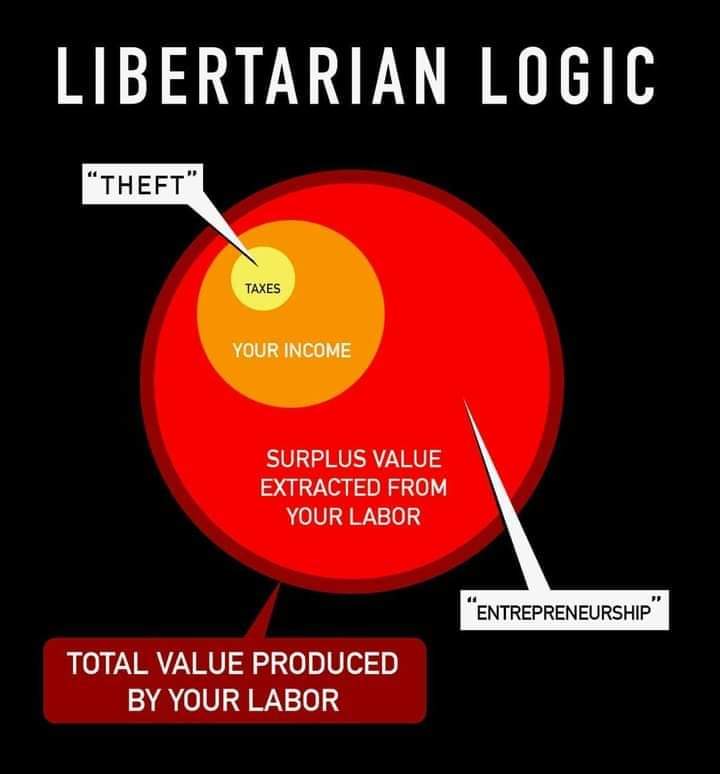
This meme that Marxists use to ridicule libertarians is not proportionally accurate, and it labels the recipients of surplus value as entrepreneurs rather than financiers, which we already explained contribute massively, but you get the idea. Marxists argue that all the value was created by labor, and the financiers did not contribute, so why are they getting the profits? Financiers however are a crucial part of the production process, they are the ones who fund and purchase the capital, and they are the ones who often fund the salaries of the workers while the business tries to get up and running. Since businesses are not guaranteed to succeed, financiers are also taking considerable risks. Capital is important to the business, as it is what makes workers much more productive. It is true, you cannot have a business without labor, but conversely, labor is also very unproductive without capital. Capital is essential and as a result, so are the people who provide it, the financiers.
To dispel the above meme completely, let’s remake it based on actual data from reality.
First here is the data. As you can see proportionally the surplus value extracted from your labor, or profit should represent only about 10% of the total value produced, while your income should represent about 60%.
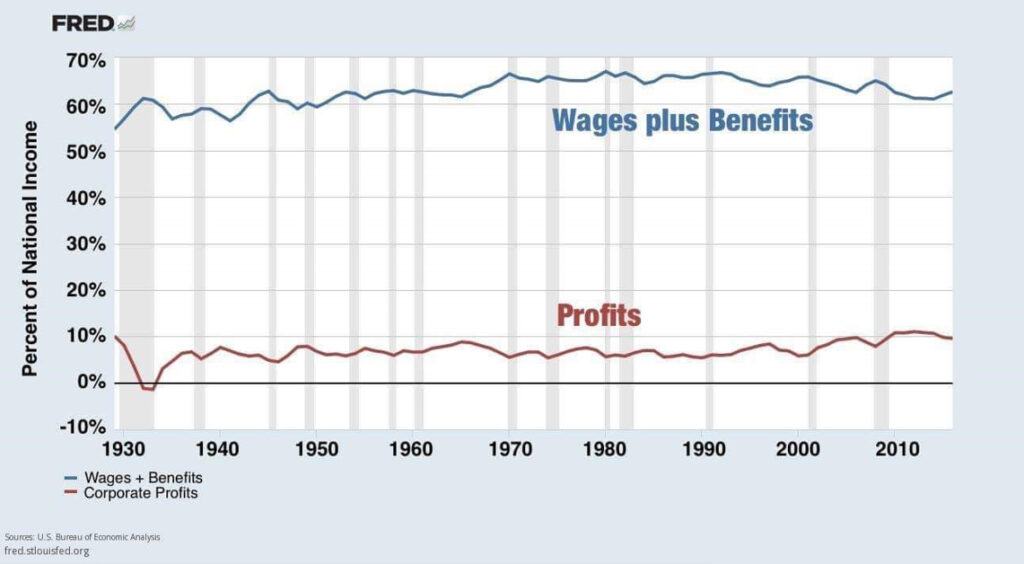
So now we remake the circle meme to represent the data accurately. This is probably not even the proper graph type to use for such a thing, but whatever.
